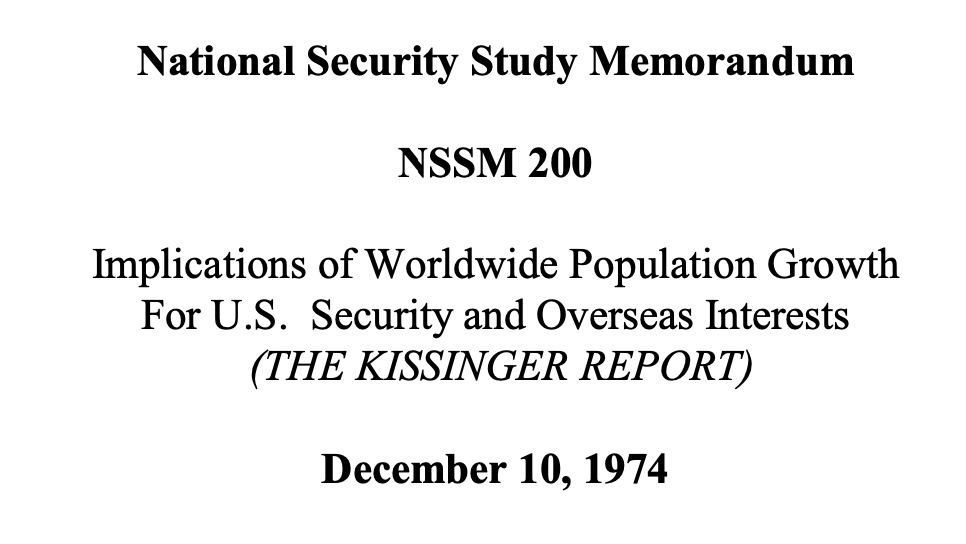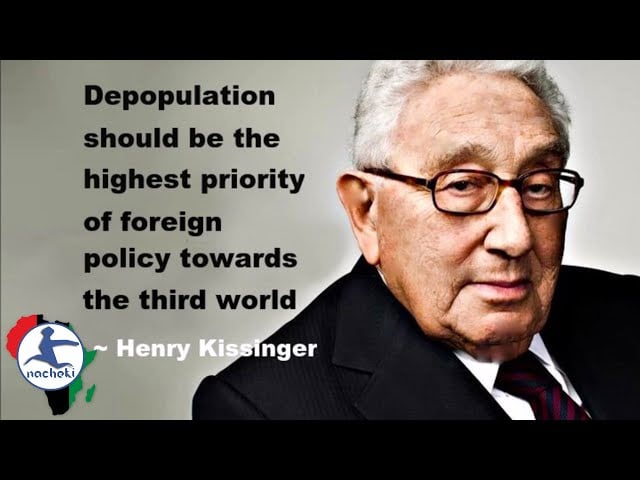
First published on November 13, 2023
Introduction
Global Research’s article entitled “Worldwide Genocide? History of U.S. Mass Killings of Civilians: The Monstrous Plan to Kill Palestinians is Fully Endorsed by Washington” focused on the casualties of numerous U.S. wars during a period (1945-2023) which is euphemistically called “the post war era”:
“During and since World War II , the United States has killed more than 40 million people in a number of countries, most of them civilians, either directly or through proxy by its puppet regimes.”
The casualties resulting from military operations undertaken by the U.S. and its proxy regimes do not however take into account America’s acts of economic and social warfare not only directed against the Global South but also, in recent years, against the “developed countries” of the European Union, where poverty is rampant and the Welfare State is being broken to pieces.
Economic and Social Warfare
The purpose of economic warfare (which goes hand in hand with military warfare) is to shut down and loot the resources of the targeted economies and subject these countries to increasing levels of poverty and depopulation to the benefit of the Western financial elites which in the course of the last few years have become exceedingly wealthy.
There are several instruments being used by this elite to accomplish these goals, especially:
- The Structural Adjustment Programs (SAPs) of the World Bank and the International Monetary Fund (IMF),
- The handing over of entire economies and sectors in the Global South to American investment companies such as BlackRock as well as to Western mining and grain corporations such as Newmont, Cargill and Monsanto.
- The generation of large-scale famines particularly in Africa.
- Deindustrialization in the West resulting from free trade agreements and outsourcing of manufacturing which has significantly increased unemployment and poverty prominently in the U.S. and Canada. The middle class has been sharply reduced in both countries.
- Spiraling energy, water, food and housing prices globally which put basic necessities out of the reach of millions more people.
- The COVID-induced shutdowns of 190 countries since 2020 which caused the economic collapse of many.
And of course all this is done in conjunction with the spreading of wars globally as seen in our previous article.
Never-ending Colonialism
The template for economic warfare has been set by 600 years of colonialism which never ended just assumed new names and forms as the Western elite has continued attacking and looting the Global South and increasingly its own population as well. The combination of economic and military imperialism is particularly prominent in the case of Africa where:
“The U.S. government has through the Pentagon, the CIA, the World Bank and the IMF, systematically demolished African economies, health and education sectors, and fueled 12 wars on the continent with arms transfers and military training. This genocidal imperial strategy has killed more than four million Africans and allowed the U.S. and the West to attain Africa’s abundant natural riches cheaply.”
Western countries colonized 80% of the world’s surface and this process destroyed the economies of Africa, Asia and Latin America for more than five centuries spreading poverty and famine globally.
India which was “the richest polity of its age” (according the New York Times) (India’s age being the 17th and 18th centuries) was converted by 200 years of British colonialism into an abyss of poverty. The British looted $45 trillion from India and killed up to 165 million Indians through periodic famines, massacres, deindustrialization and high taxes.
According to British Professor Jason Hickel ( a Fellow of the Royal Society of Arts):
“Britain used this flow of tribute from India [the $45 trillion] to finance the expansion of capitalism in Europe and regions of European settlement, like Canada and Australia. So not only the industrialisation of Britain but also the industrialisation of much of the Western world was facilitated by extraction from the colonies.”
This British plunder destroyed Indian society as Hickel explains:
“During the last half of the 19th century – the heyday of British intervention – income in India collapsed by half. The average life expectancy of Indians dropped by a fifth from 1870 to 1920. Tens of millions died needlessly of policy-induced famine.”
As Member of the Indian Parliament Shashi Tharoor put it in a speech at the Oxford Union in July 2015:
“India’s share of the world economy when Britain arrived on its shores was 23 per cent. By the time the British left it was down to below four per cent. Why? Simply because India had been governed for the benefit of Britain. Britain’s rise for 200 years was financed by its depredations in India.
“In fact, Britain’s industrial revolution was actually premised upon the de-industrialisation of India...India went from having 27% of world trade to less than 2%.”
Colonialism and the slave trade had a similarly destructive impact on the African continent. For 400 years, more than 20 million Africans were enslaved by Britain, Portugal, Spain, Holland and France.
These slaves were worked to death (in many cases) on Caribbean plantations and those in the United States and South America. As Professor Sabelo J. Ndlovu Gatsheni explains “This drained Africa of its most robust labour needed for its economic development.” It also impoverished African economies while enormously enriching Western countries.
Cambridge University history lecturer Dr. Richard Drayton’s Guardian article (August 2005) is titled “The Wealth of The West Was Built on Africa’s Exploitation.” Drayton asks:
“Why, most crucially, was there no recognition of how wealth extracted from Africa and Africans made possible the vigour and prosperity of modern Britain? Was there not a case for Britain to pay reparations to the descendants of African slaves?…African slavery and colonialism are not ancient or foreign history; the world they made is around us in Britain.”
According to Drayton, the wealth that Britain alone looted from Africa is so enormous that its debt to the continent is “incalculable”:
“For without Africa and its Caribbean plantation extensions, the modern world as we know it would not exist.
“Profits from slave trading and from sugar, coffee, cotton and tobacco are only a small part of the story. What mattered was how the pull and push from these industries transformed western Europe’s economies. English banking, insurance, shipbuilding, wool and cotton manufacture, copper and iron smelting, and the cities of Bristol, Liverpool and Glasgow, multiplied in response to the direct and indirect stimulus of the slave plantations.”
The effect of colonialism was to shut down Southern economies and subordinate them to Western requirements for cheap or free labour, captive markets for Western goods and cheap raw materials for Western industrialization. This process of shutting down and poverty creation continued in the era of neocolonialism which followed that of colonialism. Neocolonialism continues today as a form of economic and military warfare.
World Bank and IMF SAPs
Prominent in the West’s economic war arsenal are structural adjustment programs (SAPs) imposed on most Southern countries by the World Bank and the International Monetary Fund (IMF) for the last sixty years. The World Bank and IMF are both U.S.-dominated and follow Washington’s dictates. “Virtually all developing countries particularly in Latin America and Africa have implemented… SAPs.”
The region most devastated by SAPs has been Africa where they have decimated national economies and health and education sectors. SAPs offer loans on condition that governments drastically reduce public spending (especially on health, education and food subsidies) in favour of repayment of debt owed to Western banks, increase exports of raw materials to the West, encourage foreign investment and privatize state enterprises; the last two steps mean selling whatever national assets a poor country may have to Western multinational corporations.
Under SAPs, Sub-Saharan Africa’s external debt actually increased by more than 500%. In 1997, the United Nations Development Programme (UNDP) stated that in the absence of debt payments, severely indebted African countries could have saved the lives of 21 million people and given 90 million girls and women access to basic education by the year 2000. The All-African Conference of Churches has called the debt “a new form of slavery, as vicious as the slave trade.”
After forty years of SAPs, 490 million Africans lived in extreme poverty (40.8% of the 1.2 billion population) in 2021. This is up from 313 million Africans who lived in extreme poverty in 2001.
Life expectancy in Africa today is 63 years, the lowest in the world. In February 2023, a fifth of the African population (278 million) was undernourished, and 55 million African children below five years of age were stunted due to severe malnutrition according to OXFAM.
Due to SAPs, between 2001 and 2015, government spending on health, as a proportion of overall spending, decreased in 21 African countries. More than half of African citizens have no access to health care and every year 97 million Africans are faced with “catastrophic healthcare costs” which push 15 million of them into poverty.
With slashed government education budgets due to SAPs, 182 million African adults are unable to read and write, 98 million children are out of school in sub-Saharan Africa, 48 million youth are illiterate, more than 75% of all children (aged 5 to 9) do not go to school and the adult literacy rate in Africa is only 67%, well below the developing country average of 73%. 72% of the world’s illiterate people are in Africa.
Given the annihilating social impact of SAPs all over Africa, it is not surprising that Emily Sikazwe, director of the Zambian anti-poverty group “Women for Change,” asked: “What would they [the World Bank and the IMF] say if we took them to the World Court in The Hague and accused them of genocide?”
Gatsheni sums up the four phases of the West’s looting of Africa as:
“The first is the epoch of enslavement of Africans and their shipment as cargo out of the continent. This drained Africa of its most robust labour needed for its economic development. The second was the exploitation of African labour in the plantations and mines in the Americas without any payment so as to enable the very project of Euromodernity and its coloniality.
“The third is the colonial moment where Africa was scrambled for and partitioned among seven European colonial powers (Belgium, Britain, France, Germany, Italy, Spain, Portugal) and its resources (both natural and human) were exploited for the benefit of Europe.
“The fourth moment is the current one characterized by “debt slavery” whereby a poor continent finances the developed countries of the world. Overseeing this debt slavery is the global financial republic constituted by the World Bank, the International Monetary Fund (IMF), the World Trade Organization (WTO) and other financial institutions. All these exploitative journeys of capital were enabled by colonialism and coloniality.”
Military and Economic Warfare Combined with Corporate Dominance Brings Worst Famine to Africa
The endless suffering of Africa continues to increase as the continent slides into an an alarming famine driven by Western-created wars, SAPs and multinational corporate control of national mining sectors and the world food system. Here we have a horrifying example of how these three elements of the Western colonial war system work together to devastate an entire continent.
Currently, Africa is in the grip of its worst food crisis ever, driven by a perfect storm of climate crisis conditions— drought and floods—along with raging armed conflicts and spiraling grain import prices.
A record 278 million Africans— one in five—are facing hunger. The number of East Africans in this predicament has gone up by 60% in 2021 alone and it has gone up by 40% in West Africa.
According to the United Nations World Food Programme (WFP) and its Food and Agriculture Organization (FAO), “Violent conflict remains the primary driver of acute hunger [in Africa and other areas].”
Since the 1980s the United States has fueled 12 wars on the continent through arms transfers and military training, as well as proxy invasions and direct invasions.
These wars include the Democratic Republic of the Congo (DRC), Libya, Somalia, Sudan, South Sudan, Angola, Ethiopia, Uganda, Burundi, Rwanda, Congo-Brazzaville and Nigeria. The U.S. has given military assistance to 51 out of 54 African countries.
“When there is conflict, it becomes practically impossible for farmers to produce food needed to sustain the population. There is a clear correlation between the many conflicts ongoing in Africa, food scarcity, drought and climate change,” explains Omolade Adunbi, a professor of Afroamerican and African Studies at the University of Michigan.
The DRC and Libya have been the countries most destabilized by U.S. military intervention in Africa. The U.S. instigated the invasion of the DRC by its proxies Rwanda and Uganda in 1996 and 1998, and the subsequent slaughter of more than seven million Congolese has destroyed the country.
Washington’s goal was to plunder the mineral riches of the Congo through the proxy use of Rwanda’s and Uganda’s troops. The U.S. has ensured that Congo’s rich mines have been handed over to Western mining companies. Rwanda and Uganda withdrew their forces from the Congo in 2003, but continued looting its minerals through their puppet militias thus perpetuating the state of war.
“The U.S. has financed and given overall direction to the worst genocide since World War II,” says Glen Ford, editor of the Black Agenda Report, the leading website on U.S. policy towards Africa.
It is no surprise that, according to the WFP, “DRC is one of the largest hunger crises in the world. Hunger and conflict fuel one another, with armed conflict and widespread displacement prevailing for the past 25 years.” More than 25 million people (almost a quarter of the population) faced crisis levels of food insecurity at the end of September 2023.
The steep 23.9% increase in African food prices in 2022 is usually attributed to the Russia-Ukraine War by the mainstream press, but the question that should be asked is: why do African countries need to import grain from Russia, Ukraine and other countries?
This is due to the debilitation of African agriculture, mainly caused by structural adjustment programs imposed by the World Bank and the International Monetary Fund on most African countries that cut official subsidies to farmers and enforce the import of grains and the export of cash crops.
These three policies—cutting official subsidies to farmers, enforcing the import of grains and the export of cash crops—have been undermining food security in Africa since the 1980s.
The global food system, dominated by Western multinational corporations, has “squeezed out small farm holders in many countries of the Global South. Nowhere is this more applicable than African countries,” according to Adunbi.
“The neoliberal practices of asking African countries to discontinue subsidy regimes have a more devastating impact on farmers who are not able to access credits to support their farming business. The irony of it all is that multinationals enjoy huge subsidies from countries of the Global North, whereas small farm holdings in Africa do not enjoy the same benefits.
“Where credit facilities are made available to farmers in Africa, stringent conditions impair their ability to access such facilities. This amounts to a double standard, whereby Africans are constantly being blamed for problems that are not of their own creation.
“The second thing to note is that the current food insecurity is, most times, blamed on the Africans, whereas the real issue is the lack of a level playing field for the farmers who had to endure a form of double jeopardy—squeezed by their government and multinational corporations.”
Depopulation
The U.S.’ depopulation agenda was made clear during the administration of President Richard Nixon (1969-1974) in National Security Study Memorandum (NSSM) 200 (1974) titled World Population Growth and U.S. Security.

According to Stephen Mumford, an expert on fertility research:
“NSSM 200 was intended to be and is a definitive interagency study of the threat of overpopulation to U.S. security. NSSM 200 details how and why world population growth gravely threatens U.S. and global security… From his first days in office, President Nixon understood the grave dangers of high rates of population growth — more than any other president. He responded appropriately when he perceived that his people and their way of life were gravely threatened.”
NSSM 200 states that “mandatory programs [for population reduction] may be needed and that we should be considering these possibilities now.” The document asks:
(1) “Should the U.S. make an all out commitment to major limitation of world population with all the financial and international as well as domestic political costs that would entail?
(2) “Should the U.S. set even higher agricultural production goals which would enable it to provide additional major food resources to other countries? Should they be nationally or internationally controlled?
(3) “On what basis should such food resources then be provided? Would food be considered an instrument of national power? Will we be forced to make choices as to whom we can reasonably assist, and if so, should population efforts be a criterion for such assistance?
(4) “Is the U.S. prepared to accept food rationing to help people who can’t/won’t control their population growth?”
NSSM 200 was also known as “The Kissinger Report” being supervised by Henry Kissinger, Nixon’s National Security Adviser.

 The text of the document makes clear that it was aimed at “curbing world population with a view to serving U.S. strategic and national security interests” as Prof. Michel Chossudovsky puts it.
The text of the document makes clear that it was aimed at “curbing world population with a view to serving U.S. strategic and national security interests” as Prof. Michel Chossudovsky puts it.
This is no surprise coming from Nixon and Kissinger, two genocidal U.S. leaders who had just made a massive contribution to world depopulation by killing 4.3 million Vietnamese, Cambodians and Laotians in the Vietnam War.
Kissinger was also behind the September 11, 1973 Military Coup in Chile
Image: Henry Kissinger and General Augusto Pinochet (mid-1970s)
Chossudovsky adds that “The NSSM 200 has been the source of inspiration of Klaus Schwab, et al in the formulation of the World Economic Forum’s Depopulation Agenda.”
“Big Money” and the Depopulation Agenda
The Western elite’s depopulation agenda is no secret. On May 26, 2009, The Wall Street Journal reported in an article titled “Billionaires Try to Shrink World’s Population” that Bill Gates, Warren Buffett, David Rockefeller, George Soros and Michael Bloomberg amongst others had met in New York privately to discuss this reduction.
Chossudovsky points out that:
“Shrink the World Population” (the WSJ Title) goes beyond Planned Parenthood which consists in “Reducing the Growth of World Population”. It consists in “Depopulation”, namely reducing the absolute size of the World’s Population, which ultimately requires reducing the rate of birth (which would include reduced fertility) coupled with a significant increase in the death rate.”

Bill Gates appeared to confirm this in his TED talk in February 2010 when he stated
“And if we do a really great job on new vaccines, health care, reproductive health services, we could lower that [the world population] by 10 or 15 percent”.
(See quotation on Video starting at 04.21. See also screenshot of Transcript of quotation)
TED Talk at 04:21:
“According to Gates’ statement, this would represent an absolute reduction of the World’s population (2010) of the order of 680 million to 1.02 billion.“
Dr. Asad Ismi contributed to this report.






